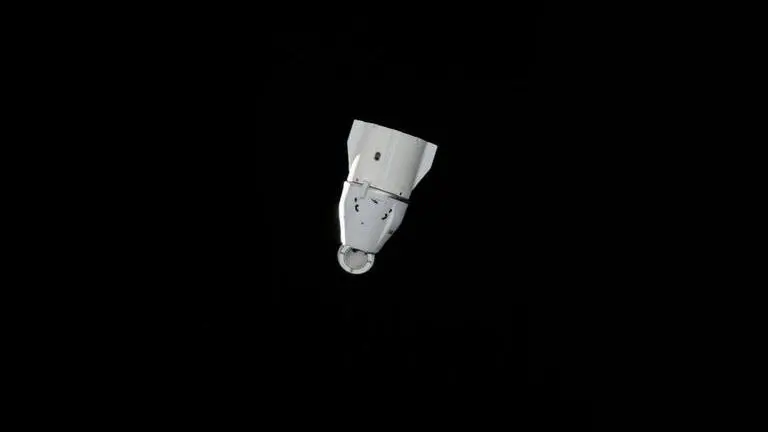Updated 20 August 2022 at 20:52 IST
SpaceX's Dragon spacecraft undocks from ISS with over 1,800 kg of supplies; see pics
SpaceX's Dragon capsule separated from the ISS at 8:35 pm last night with around 1,814 kg of supplies and will splash down into the Pacific Ocean at 12:17 am.
- Science News
- 2 min read

SpaceX’s Dragon spacecraft undocked with the International Space Station (ISS) on August 19 and is now heading for a splashdown into the Atlantic Ocean, off the coast of Florida. According to NASA, the spacecraft departed from the space station at 8:35 pm last night with around 1,814 kg (over 4,000 pounds) of scientific investigations and supplies.
SpaceX said that the capsule will cover a 28-hour-long journey before re-entering the Earth's atmosphere for splashdown at 12:17 am IST on August 21.
Shots from the @Space_Station of Dragon's departure pic.twitter.com/nK2ZteNy2c
— SpaceX (@SpaceX) August 19, 2022
The company even shared spectacular pictures of the Dragon capsule that were captured from the space station after it undocked from the forward port of the Harmony module. The spacecraft arrived at the ISS on July 16 as part of the 25th commercial resupply services mission which SpaceX launched for NASA.
Watch Dragon undock from the ISS
The @SpaceX #Dragon resupply ship is headed back to Earth and will splash down off the coast of Florida on Saturday loaded with scientific cargo for analysis. More... https://t.co/6TzkptzqiN pic.twitter.com/dt5NNf5KaD
— International Space Station (@Space_Station) August 19, 2022
The Dragon spacecraft was caught departing the space station in a spectacular video that was shared on the space station's Twitter handle. Besides, SpaceX also shared a short clip of the capsule firing its Draco thrusters to move away from the ISS and begin its journey to Earth.
Advertisement
Video of Dragon’s Draco engines firing as the spacecraft departed the @Space_Station yesterday. Still on track for splashdown off the coast of Florida today at ~2:47 p.m. ET pic.twitter.com/pzSL5y8lul
— SpaceX (@SpaceX) August 20, 2022
As for the supplies being sent back, they include data from multiple experiments such as mapping Earth's dust to determine their impact on climate change, studying the effects of microgravity on the aging of cells, and examining the change in the metabolism of soil microbes in space. Once on Earth, scientists will analyse the results of these experiments.
Interestingly, NASA had also sent experiments to determine how microgravity affects the process of creating an alternative of concrete made with organic material and on-site materials. These on-site materials can be lunar or Martian soil and tapping into this technology could one day help build bases on the Moon and Mars without carrying construction materials from Earth.
Advertisement
"These are just a few of the hundreds of investigations currently being conducted aboard the orbiting laboratory in the areas of biology and biotechnology, physical sciences, and Earth and space science", NASA said in a statement. "Advances in these areas will help keep astronauts healthy during long-duration space travel and demonstrate technologies for future human and robotic exploration beyond low-Earth orbit".
Published By : Harsh Vardhan
Published On: 20 August 2022 at 20:52 IST
